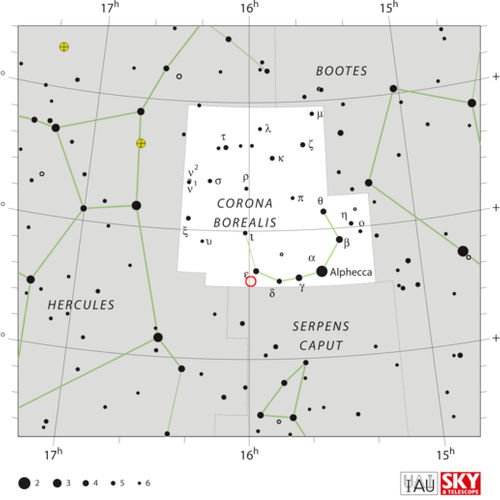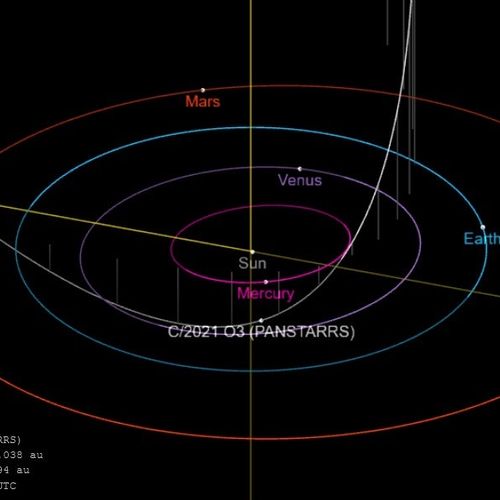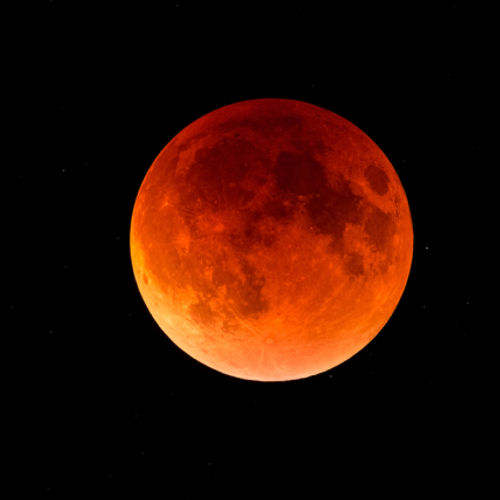
| Added | Wed, 26/07/2023 |
| Источники | |
| Дата публикации | Tue, 25/07/2023
|
| Версии |
A comet with horns? Yes, it's true. On July 20, stargazers witnessed an amazing event: something exploded on the surface of comet 12P/Pons-Brooks, as a result of which its brightness increased 100 times. The debris formed as a result of the explosion formed a coma in the form of two horns, which further enhances the intrigue of this heavenly spectacle.
Comet 12P/Pons-Brooks has a long history of explosive behavior. It was first discovered in 1812 by Pons, and then rediscovered in 1883 by Brooks. This explosive comet makes its way into the inner Solar System every 71 years, and no less than seven significant flares have been recorded since the 19th century. This nature of the eruptions suggests that the comet may be a cryovolcanic comet similar to Comet 29P/Schwassmann-Wachmann.
Currently, comet 12P/Pons-Brooks is beyond the orbit of Mars and is slowly moving towards the Sun. It is expected that its close approach to the Sun will occur in April 2024. It is expected that at this time it will become visible to the naked eye and reach the 4th or 5th magnitude. However, given the history of unpredictable outbreaks, it is possible that it may become visible even earlier.
Amateur astronomers are advised to closely monitor the development of comet 12P/Pons-Brooks. The comet is currently passing through Draco's head, not far from the north celestial pole. Having an astronomical magnitude of +11, it is easily observable in medium yard telescopes. Don't miss the chance to see these distinctive horns and share your photos with us.
Scientists have long been interested in comets and their unusual behavior. In the article "Celestial Intentions: Comets and the Horns of Moses," researchers delve into the intriguing nature of these celestial bodies. Pierre Lescodron in his book "Changes of the Earth and Man's Connection with the Cosmos" highlights the historical understanding of comets. At the end of the XIX century, Professor Zollner from Leipzig suggested that the self-illumination of comets could be caused by electrical excitation. According to this theory, comets are not just dirty snowballs, but glowing chunks of rock.
This assumption is also confirmed by observations made at the end of the XIX century. An article was published in the journal "English Mechanic and World of Science" dated August 11, 1882, which stated that physicists are increasingly inclined to believe that the self-illumination of comets and the phenomenon of their tails are associated with electrical phenomena. In 1896, an article was also published in the journal Nature, in which it was suggested that the electric repulsion of the Sun may be responsible for the formation of comet tails.
These findings refute the traditional view that comets consist of icy debris. On the contrary, they suggest that comets are luminous rocky objects. Similarly, asteroids may not be glowing chunks of rock, as previously thought. The recent discovery of the asteroid P/2013 P5 with a luminous tail a million miles long has puzzled the scientific community. Official explanations explained this phenomenon by the rapid rotation of the asteroid, as a result of which it emits a large amount of dust. However, this discovery hints at the blurring of the boundaries between comets and asteroids, calling into question our ideas about these celestial objects.
As we continue to explore the mysteries of our universe, events like the explosive ejection of comet 12P/Pons-Brooks serve as a reminder of how much we still have to discover. By studying these celestial phenomena, we gain valuable information about the nature of comets and asteroids, shedding light on their composition and behavior. So keep an eye on the sky and watch the wonders that await us.
Новости со схожими версиями
Log in or register to post comments









